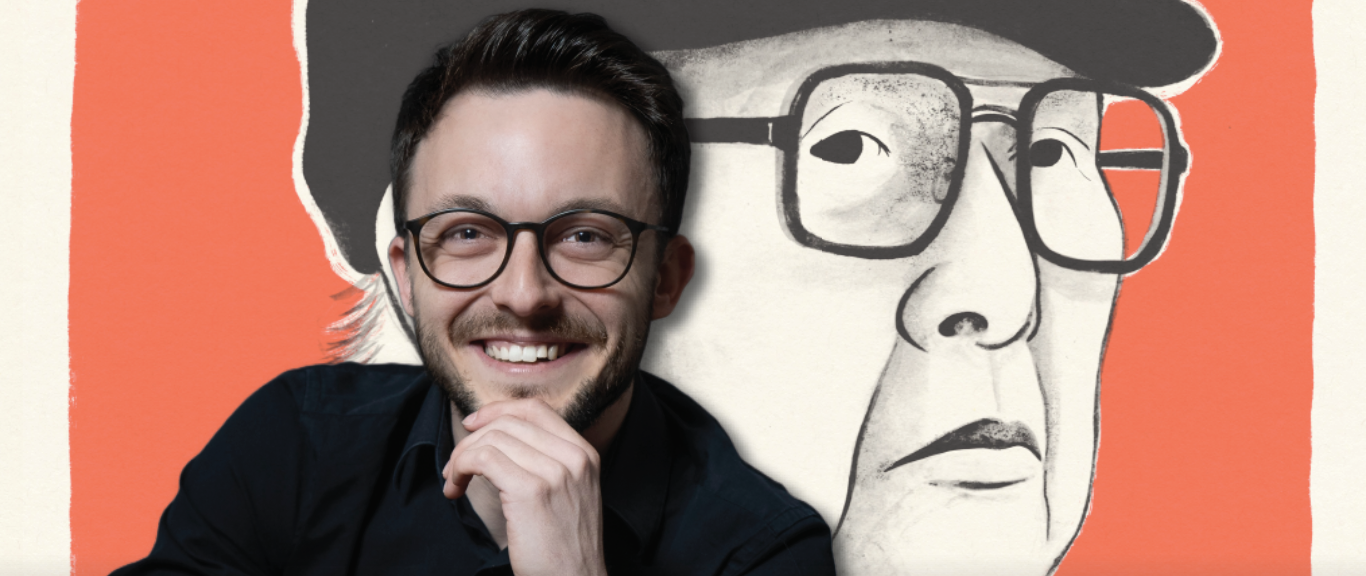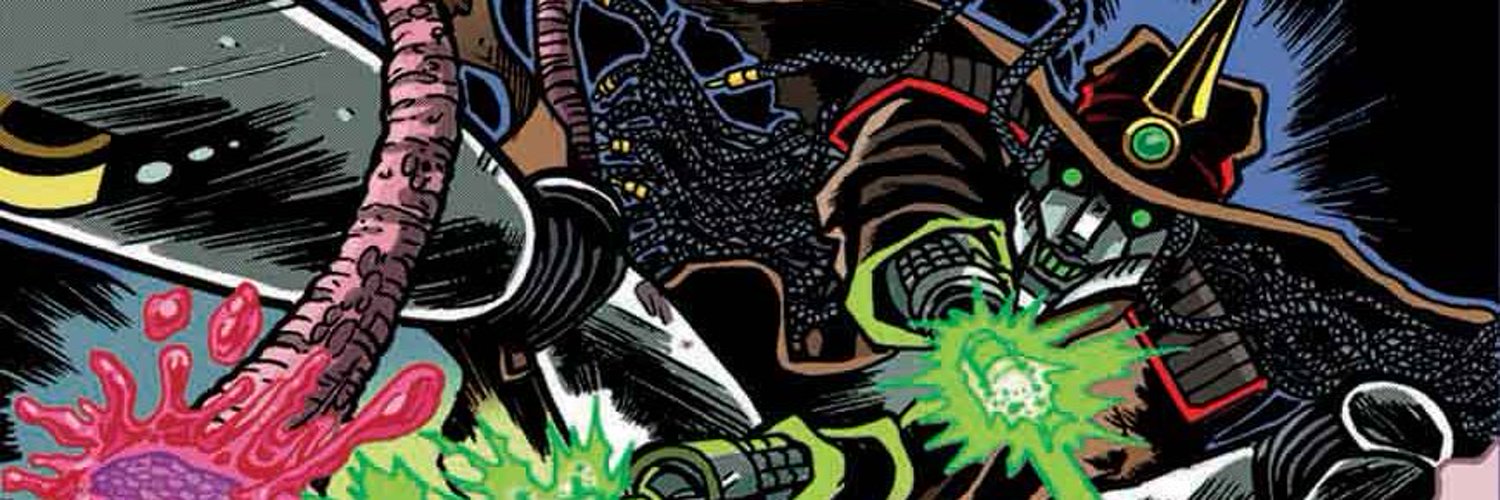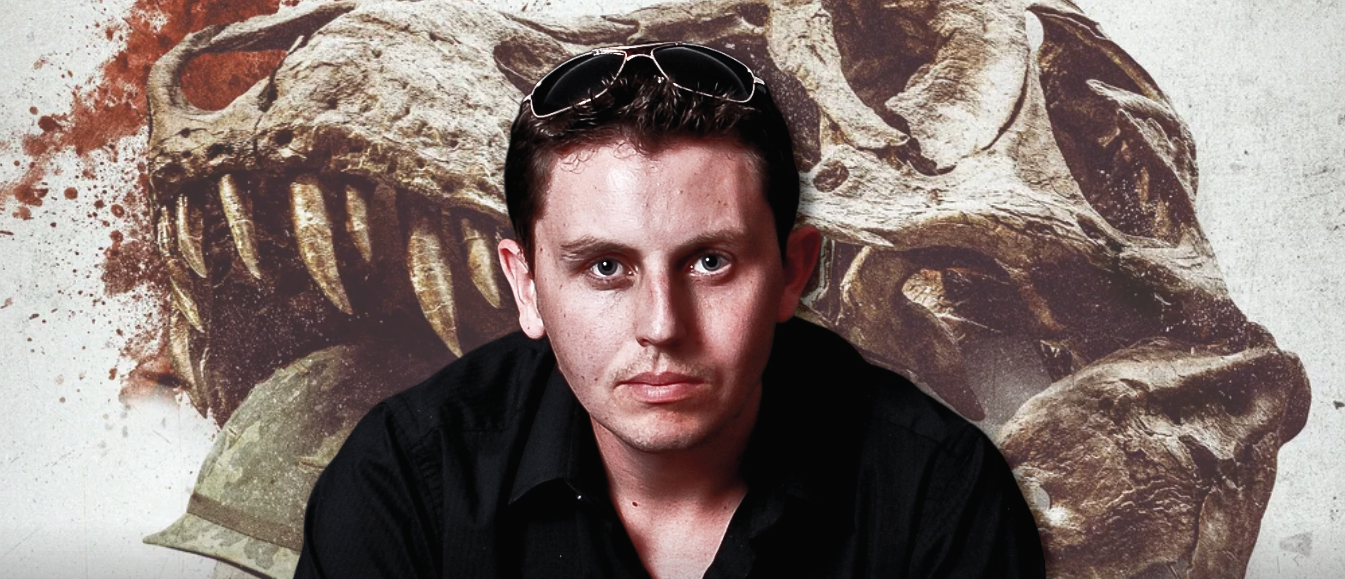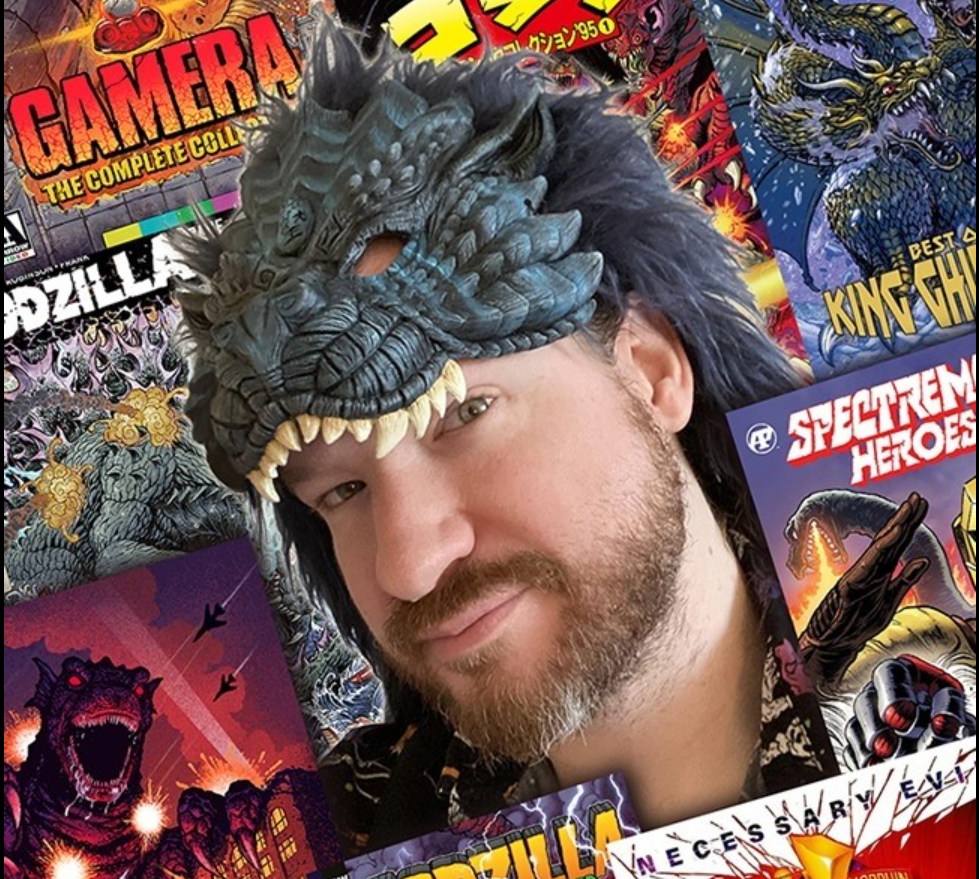Earlier this month, Ishiro Honda: Memoirs of a Film Director made its global premiere at the Sitges Film Festival in Spain. With much fan interest and curiosity worldwide, the community is eager to see this documentary after its film festival and online buzz. Kaiju United had the opportunity to sit down with Mr. Bellés on the heels of its premiere to discuss growing up as a Godzilla fan in Spain, earning his doctorate degree in Japanese cinema, and of course, tidbits about the documentary itself.
Jacob Lyngle: Hey, KU! We’re here with Jonathan Bellés, director of Ishiro Honda: Memoirs of a Film Director and Dawn of Kaiju Eiga.
Jonathan, would you like to go ahead and introduce yourself?
Jonathan Bellés: Sure. I’m from Spain, of course. I am currently working in Madrid as a filmmaker for ads, publicity, etc. But when I can, I produce my own documentaries. Mostly about Japanese cinema, but more recently, specifically kaiju and monster movies. I started doing this about 10 years ago with two documentaries, and haven’t stopped since.
JL: Where did your love for kaiju cinema begin?
JB: I was about eight when I saw my first Japanese film. I think it was around 1997… but the first two Godzilla films I recall seeing were Omori’s Godzilla Vs. King Ghidorah and 1992’s Godzilla Vs. Mothra, directed by Takao Okawara. I immediately fell in love! The aspect of these movies that attracted me the most was the impeccable miniature design, because when I was a kid, I couldn’t stop drawing & painting. When I watched these movies, I realized that there were talented people hand crafting and creating everything you see – none of it was done with CGI. It was something I could imitate in my home.
When my brother and I were eight years old, more or less, we did our own Godzilla films without using toys. I built a replica of Tokyo with paper and other various materials, including the famous Tokyo Tower. I really wanted to imitate these filmmakers, especially the destruction of the models. I know a lot of people get attached to the drama and human aspect of these films, but truthfully, I was hooked by the monsters destroying everything, the superpowers, the science, all of that. From that moment on, I haven’t stopped watching Godzilla movies. I’m 35 years old now! (laughs)

[Photo courtesy of Mr. Bellés]
JL: How accessible were these films in Spain? Did you catch screenings? Were they on TV? What was the home video market like?
JB: In Spain, just like many countries around the world, they change the titles. They were released theatrically in cinemas, but very late. For example, a few films from the sixties were released ten years later around the years 1976-1977. But in the beginning, it wasn’t too bad. The first Godzilla was released in Spain in 1956. The theatrical distributors stopped releasing the films in Spain in 1980, I believe, and then they started to come out straight to VHS, and those releases were fascinating, to say the least.
The spectrograph was cut in a square format for the home video release, and because of that, the scope disappears completely. Sadly, for many of these films, that was the only way to see them. The only version available was this square release, and the color and everything was really poor quality. Filmax, another distribution company, and perhaps the biggest one in Spain, released many of them… about 22 titles. I actually bought all of them when I was a kid, as they were the first time many of these films were available here. They were not the uncut original Toho versions with the good colors, but they were okay for what they were. One very important detail to mention was that these films were not recut in any way like in other international releases. It was the original version, with all edits intact, just dubbed in Spanish. Later on, we’d see DVD releases of these movies in 2001 and 2005, but eventually that was all we received for a very long time.
JL: Can you tell us some examples of the changed movie titles?
JB: Of course. Gojira tai Megaron, known in English as Godzilla Vs. Megalon, is “Gorgo y Superman se citan en Tokyo” which roughly translates to “Gorgo and Superman Meet in Tokyo” in English. Of course, there is no Gorgo, and there is no Superman in this film. (laughs)

©Toho Co., Ltd.
JL: On the official website for the documentary, I noticed that you had stated you have a doctorate in Japanese cinema, which is very impressive. What made you decide to dedicate an academic degree entirely to these films?
JB: One of the reasons is because as a child, when I was watching these films, many people were laughing because I was watching this. I’m not sure if the same reaction was had over in the US, but here in Spain they were just seen as puppets & toys, and that’s all. My goal was to take it seriously as it should be. I wanted to tell the story of Kaiju Eiga, the works of Ishiro Honda, and the themes of the metaphorical atomic bomb present with Godzilla’s character. The project started when I had asked one of my tutors to be the director of my PhD. He agreed under one condition – that I had to go to Japan and study there to get information from direct sources. At the time, I was working as a freelancer and doing videos for a company in between my studies, so I decided to save a ton of money and ended up going to Japan in 2014 to conduct studies and interview talent from these movies.
In my PhD, I talk about the first Godzilla film especially. I covered the genre until about 1965, which I believe encapsulates the Golden Age of Kaiju films. I took the films from these years, the works by Ishiro Honda especially, and analyzed them. I chose to focus on the original 1954 film because I think the original Godzilla has a lot of things to say. My PhD in entirety is almost 900 pages. You can access it on the internet for free as a PDF, as I did it through a public university.
You can read my thesis in full here.
I did most of my studies in Valencia at Universitat Politècnica de València. I spent almost five years doing this. In my opinion, there are two standout interesting things from my work. The first thing is the last chapter, which is basically like an analysis of the first Godzilla film done shot by shot. I analyzed all the shots by type of shot, the frame, the camera movements, the dialogue, the special effects sequences, all of it.
However, the most interesting thing is the final part of the PhD, which is all the interviews I did in Japan. I handled all of the transcription and translation, from Spanish to Japanese and back. You can read them in full there, and it includes talks with Koichi Kawakita, Akira Takarada, Hauro Nakajima, Kenpachiro Satsuma, and more. Why did I do this? Because in my documentary, The Dawn of Kaiju Eiga, we had to cut about 10 hours of recorded interviews in Japanese down to a 51-minute documentary. You can’t put everything there, so I used my PhD as a way to show all of my work. There’s a lot of information!
JL: Are you fluent in the language or do you have a translator with you for these interviews?
JB: I studied Japanese, but just for a few months many years ago. I always hire interpreters or translators when I conduct interviews in Japan. Also, I hire interpreters for all the emails and spend a lot of time & money to ensure everything is translated properly and things are scheduled and ready to go before I leave Spain for Japan. One of my frequent collaborators is Daniel Aguilar, a man who’s lived in Japan for around 40 years. If you look at behind-the-scenes photos of our productions, he’s always there because I trust him a lot. He’s not only a good translator from Japanese to Spanish, but also he’s an expert on kaiju cinema. He also writes books about it.
JL: Can you tell us about the film industry in Spain?
JB: Here in Spain we have a very healthy industry, in my opinion. This is because now a lot of big companies, such as HBO, Netflix, and so on, are here in Madrid with productions. I think it’s working very, very well. The newest Lord of the Rings showfrom Amazon, The Rings of Power, had some scenes filmed here in Tenerife. Of course, we have to mention Pedro Almodóvar, a very iconic Spanish filmmaker known internationally for films such as Tie Me Up! Tie Me Down!, who also regularly films his movies here locally.
JL: When you’re traversing across countries to film footage and conduct interviews, what is the key to handling the massive amounts of logistics required to pull this off?
JB: Honestly, the key is Excel, in my opinion. Without that, you cannot move a step. Of course, you need people. You need to trust the team you have built. Because many of these people, unfortunately, are collaborators and are doing this because they believe in it. I cannot do a 100,000 euro production, which would be the real budget of this film, because I don’t have that money. Thankfully, there are people, a lot of people, that are ready to help out. The two individuals that came out from Spain to Japan and to Chicago this summer participated because I paid for every expense on their trip – the food, accommodations, internet, everything. It’s because of people like them that I can do these films. It’s quite difficult to find public funding for these productions because of how niche of a subject matter it is in Spain.

[Photo courtesy of Daifilms]
JL: What was the biggest challenge in the production of this documentary?
JB: I think languages, really. When I send emails or other means of communication, I want to wait and assess with my translators before moving forward. This process takes time, but I think it’s worth it, because it’s professional. Culturally, Japan is a very different country from us, and I think the formalities, despite taking time and manpower, are worth nailing down.
JL: Let’s get to know you a bit, Jonathan. What do these kaiju films mean to you on a personal or philosophical level?
JB: I would say two different meanings. One was when I was a kid. That was the idea of destruction and all of these monsters provoking a mess in the cities. It made me feel liberated, in some way. I felt like I could be myself, finally. Then when I started to read more about the bomb and all these connections in the real history behind these movies, it became more intellectual for me. There’s a painting by Pablo Picasso called Guernica, which is very iconic. He painted it in response to Guernica being bombed by the Nazis. It’s another representation of humanity’s suffering that is explored through artistic mediums. Godzilla is the same in some way, of course not by the bombs of the Nazis, but by the bombing by the atomic bombs.
JL: You have a well-established admiration for Ishiro Honda. Are there other filmmakers that inspire you?
JB: I have a friend who is also working with me on these films as supervising editor; his name is José Luis Romeo. He’s a bit older than me, and when I was a kid, he told me once, “It’s good to see Godzilla still has films, but they are quite limited, cinematically speaking. You should open your mind and see more films.” I took his advice, and in retrospect, I think it was one of the most important pieces of advice in my life, because then I started to check more films out of Japan. I watched European films, French films, Italian films, German films, US films, and of course, Spanish films.
When I circled back to Japanese cinema, I asked myself, what can I get out of the essentials and titans of Japanese film? You have individuals like Mikio Naruse, Akira Kurosawa, Yasujirō Ozu, and Masaki Kobayashi who are all amazing artists.
JL: Since we’re on the topic, what are five essential Japanese films that our readers should watch?
JB: Aside from the original 1954 Godzilla, one of the films that tops my favorites list is Woman in the Dunes, directed by Hiroshi Teshigahara. Another one is Harakiri, directed by Masaki Kobayashi. Such an amazing film! Onibaba, too. Truth be told, Akira Kurosawa for me is like God, so it’s hard to pick just one. I’d probably say Ikiru from his vast library of films. There is a phenomenal film that Eiji Tsuburaya worked on as an Assistant Cameraman called A Page of Madness, as well.

©Toho Co., Ltd.
JL: What do you think Ishiro Honda’s biggest impact has been?
JB: If I see films by Roland Emmerich, like 2012 or Independence Day, for example, I see a lot of Ishiro Honda’s work within. Honda had the ability to showcase all countries working together against the enemy, especially monsters or aliens. So I think that had a lot of influence on these films. For example, when you see Russia and the United States working together in a movie that came out during the Cold War, is that possible in the real world? No. I believe that is something that really had an impact and defined his style as a filmmaker. And of course, there’s Godzilla. That character is all over pop culture and movies around the world. Everybody knows who Godzilla is.
I make a comparison to Honda’s Godzilla being sort of a Frankenstein. Other people have their marks on the series, and it takes its own life. Numerous filmmakers have used Godzilla for their own vision, putting Godzilla in many different points of view, such as living metaphor for the atomic bomb, enemy of the world, or hero of Japan. Later on, the themes got to stuff like “Oh, energy is not so bad.” Godzilla has created a life of its own; the baby has taken its own steps. That’s the way I see it in terms of Honda and his relationship with Godzilla. At some point, I believe after Invasion of Astro Monster, Godzilla fell out of Honda’s hands. The studio wanted to do something else with the character. Honda was seen by Toho as an “A” director, so when the budgets started shrinking, they had to get somebody that was more of a “B” director.
JL: What do you think people will learn from this documentary about Ishiro Honda?
JB: When I wanted to do this film, I was worried about how we were going to separate Ishiro Honda from Godzilla. It’s easy to separate Godzilla from Honda, but not quite the other way around. I spent a lot of hours diving into Ishiro Honda as a man. We wanted to explore how he was as a person, and expand on his body of work beyond just genre film work. My first few interviewees told me “He was a nice person.”, when I talked to them. We can’t have 70 minutes of a documentary with everyone just telling us that he was a nice person! At first, I didn’t think I could do it, but then I read Steve Ryfle & Ed Godziszewski incredible Honda biography. I reached out to them via email and began frequent video correspondence. They told me so much about the world of Ishiro Honda and about his non-kaiju drama films. I decided then that I was going to try and do this documentary, and thankfully, the Honda family, Steve, Ed, and some Honda family friends were very gracious in working with us and providing us with stories, photos, and reference. There are lesser-known things in this documentary that we wanted to tell, such as his time in Manchuria as a soldier. Many people focus on his life with Toho Studios, but there’s so much more to his story than that.

[Photo courtesy Daifilms.]
JL: Part of the filming took you to G-FEST in Chicago this summer. What was that experience like?
JB: It was my first trip to Chicago. I have to say, I only travel abroad because of my projects. I don’t typically do tourism, so this time I went to Chicago, and I really enjoyed the city. I had a few hours at the end of the trip after filming was done, because the trip was like four days. This time there was only one person with me, Oscar Rivero, who was one of the Directors of Photography. In Japan, there were two. There was Ségolène Lacourte from France, and Óscar Rivero from Spain. Working with Ségolène and Óscar was amazing, because they knew from the start how to frame shots and light my film perfectly. I invited Linda Miller and Steve Ryfle out to join me and do interviews in the hotel during the show. Linda had attended the previous G-FEST as a guest, so she wasn’t invited this time. I was like, come out and join me!
Regarding the show itself, G-FEST was amazing. I saw images of the convention on the internet, right? But it’s not the same if you are there. I’ve never seen so many Godzilla fans together in one area in my life. There were like 5,000 Godzilla fans there! There was so much stuff to see – all the toys, handbags, merchandise, etc. It’s like a little eight year-old Jonathan woke up here. I said to myself, oh my god, I’m really here. I enjoyed a lot of the conferences and panel discussions going on during the weekend. The best thing, however, was looking at the costume parade, and seeing all of these kids and families that celebrated Godzilla. It made me feel like the next generation was truly appreciating Godzilla like I have.

[Photo courtesy Mr. Bellés]
JL: The documentary had its world premiere at the Sitges Film Festival on Friday, October 4, 2024. Tell us about the premiere.
The premiere of Ishiro Honda: Memoirs of a Film Director was an incredible experience. This event was made possible thanks to the collaboration of the Cine Asia Foundation and the Japan Foundation. I am also deeply grateful to the Sitges International Film Festival of Catalunya for the opportunity to premiere this documentary during such an important year: the 70th anniversary of Godzilla.
In fact, the festival screened my documentary, followed by a discussion on its production, and concluded with the projection of the 4K version of Godzilla from 1954. It was an unforgettable experience, especially because, for me, it was not only the celebration of Godzilla’s 70th anniversary but also marked 20 years since my first visit to this wonderful festival.

[Photo courtesy Mr. Bellés]
I was 14 years old when, in 2004—during the 50th anniversary of Godzilla —I attended the festival for the first time to interview Ángel Sala, the festival’s director, about Godzilla. At that time, several Godzilla films were screened. By the way, this year the festival also screened The Dawn of Kaiju Eiga, my other documentary about Godzilla.
It was very special to meet him again, but from a different perspective: from a child excited about Godzilla to an adult who had produced a documentary about his passion: Godzilla and Ishiro Honda.
JL: Thanks for taking the time to chat with Kaiju United.
JB: Thanks to you for inviting me. It’s a pleasure.
For additional information on the documentary, we encourage you to visit the official website for Ishiro Honda: Memoirs of a Film Director.





